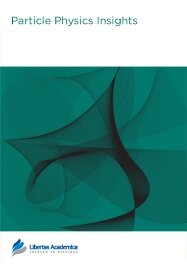

Publication Date: 15 Jul 2009
Type: Original Research
Journal: Particle Physics Insights
Citation: Particle Physics Insights 2009:2 1-20

Donald William Chakeres
Professor of Radiology, Department of Radiology, The Ohio State University, Room 485, 395 West 12th Avenue, Columbus, OH.
Abstract
The hypothesis of this paper is that there is a quantum integer number system that is analogous to the numbers associated with the elements, the isotopes, or the different energy states of hydrogen. The quantum numbers in this new model are instead associated with different fundamental constants (i.e. the normalized properties of hydrogen, or masses of particles and bosons) rather than to a specific isotope or hydrogen energy state. This hypothesis is supported by many empirical observations and secondary predictions. A second hypothesis is that all of the fundamental constants are related to the neutron. The third hypothesis is that associated constants (i.e. the electron and Z) are related by common harmonic number products typical of harmonic systems. These quantum properties become obvious when appropriately plotted and analyzed. All constants are normalized to their annihilation frequency equivalents, independent of their primary units. The annihilation frequency of the neutron is the universal frequency to which all other constants are mathematically linked. All of the constants are evaluated as coupling constants, with the denominator equal to the annihilation frequency of the neutron and the numerator equal to the other physical constant’s frequency. The annihilation frequency of the neutron (expressed as a dimensionless number) is raised to an exponent, and that value is equal to each coupling constant. Classic quantum number/spectral properties are demonstrated, including the property that the only possibilities are those of a consecutive integer series, and that there is symmetric line splitting in the presence of a force field (for electromagnetic or weak forces). These points for each exponent are plotted on a ln-ln plane. The neutron is plotted at the (0, 0) point. The only possible quantum x-axis points are related to integer fractions (±1/n). The degenerate actual frequencies are all nearly equal to 1±1/n exponent values for the annihilation frequency of the neutron. The y-axis values are the minor differences of the known exponents and quantum fractions (1 ± 1/n), analogous to Zeeman’s splitting. These quantum integer patterns are only related to linear relationships of the fundamental constants. The ln-ln points associated with the properties of hydrogen are linked to all constants by two linear relationships, one for weak kinetic forces (Bohr radius, mass of the electron) and one for electromagnetic forces (Planck’s constant, hydrogen ionization energy). The nuclear entity points all fall solely on lines between these hydrogen points, symmetrically plotted across both axes for quantum numbers 1–8 and the neutron only. The nuclear particles and bosons that are logically associated demonstrate their number lineage by harmonic integers which are related to hydrogen integer points (n = 1–8). Some nuclear quantum numbers (i.e. muon, 24) represent the product of an associated hydrogen integer (i.e. neutrino, 2) and a lower associated lineage nuclear integer (i.e. Z, 12). Derivations of the actual frequency equivalents, including the muon, tau, W, Z, pions, kaons, and the quarks, are possible from the properties of hydrogen only to an accuracy of many exponential digits, supporting the hypothesis. This model represents a new and powerful means of analyzing the relationships of the fundamental constants, generating unifying relationships between hydrogen and nuclear properties previously not described.
PDF (885.84 KB PDF FORMAT)
RIS citation (ENDNOTE, REFERENCE MANAGER, PROCITE, REFWORKS)
BibTex citation (BIBDESK, LATEX)

I thank Libertas for the guidance, speed and encouragement they provided from my first submission until publication. I appreciate the patience and support of everyone I communicated with. Your services are user-friendly. I intend to submit more articles to your journals.
Facebook Google+ Twitter
Pinterest Tumblr YouTube